Volvo High Traffic Density Report Released
Published on October 30th, 2018
The Volvo Ocean Race (VOR) organizers commissioned an independent report following the collision between Vestas 11th Hour Racing and a non-racing vessel in the final stages of the leg into Hong Kong during the most recent edition of the race.
The report, authored by Chris Oxenbould, Stan Honey and Chuck Hawley, has examined ocean racing at night in areas of high vessel traffic density – the Volvo High Traffic Density Report.
The report was not required to investigate the collision incident but was to draw on the experiences from recent editions of the VOR to establish what steps race organizers may consider to mitigate risk in areas of high traffic density in the future.
The authors were appointed as the independent report team with a broad base of experience. During the Auckland stopover they interviewed all skippers and navigators of the 2017-18 VOR and some other sailors who were available and had relevant experience. The team produced a detailed 50 page report that is available on the event website.
In recent years there have been considerable changes; offshore racers now routinely sail at high speeds of 25-30 knots and more. They also carry headsails that can restrict the look-out and block the visible arc of deck level navigation lights in some circumstances.
All crews interviewed were familiar with congested waters around the world and noted they had differing characteristics. Some were strictly controlled and quite orderly, like the Straits of Dover while others were unregulated and presented more of a challenge.
The crews recounted their experiences in transiting through the fishing fleet in the approaches to Hong Kong. There were a lot of vessels with lights visible around the horizon on a dark clear night.
Virtually all of the vessels had some form of lighting and exhibited AIS. The fishing vessels were either stationary or travelling at slow speeds of 3-6 knots and they did not form an impenetrable barrier.
In situations where racing boats meet other vessels the international regulations apply. Three of the most important rules are closely inter-related. They cover maintaining a look-out, sailing at a safe speed, and at night, being seen with appropriate navigation lights. Also of note is that these rules require a sailing vessel to keep out of the way of a vessel engaged in fishing.
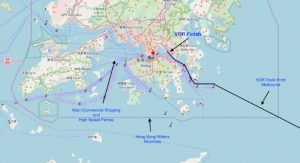
Approaches to Hong Kong – major shipping routes and ferry traffic to the west of Hong Kong Island – the Volvo Fleet approached from the East
The regulations require a ‘proper look-out’ at all times using ‘all means appropriate in the prevailing circumstances’. The rule does not require a continuous 360° visual lookout as it is impractical. However in an ocean racer radar, AIS and VHF radio watch would be important means of look-out where fitted.
As with most modern ocean racers, the VO 65’s visual look-out is often impeded on the lee bow. This required special techniques, such as ‘dipping the bow’ to allow the helmsman to view part of the area blocked by the headsails and, at times, placing dedicated look-outs to leeward. The crews were comfortable that an adequate visual look-out is difficult but achievable.
The boats are fitted with AIS, radar and sophisticated navigation systems that assist collision avoidance. The report team found that although the Frequency Modulated Continuous Wave (FMCW) radar provided very good discrimination of contacts, it was not very effective in detecting weak targets at a reasonable range. Radar detection ranges were about a third of that expected from a conventional 4 kW pulse radar. Some crews reported an unfamiliarity with the radar self-tuning functions, which may have further reduced its performance.
In addition several boats experienced unreliable and degraded performance with the fitted AIS system. These problems, principally caused by a faulty coax connector at the masthead, were rectified during the Itajaí stopover. In the earlier part of the race this important technical back-up to the visual look- out was inconsistent throughout the fleet.
The team made enquiries about the utility of Forward Looking Infrared (FLIR) in an ocean racer. With current developments there is a possibility that a small camera producing a stabilized picture could soon be fitted at the masthead. This would significantly improve the look-out.
The regulations also require boats to sail at a safe speed at all times so that the boat ‘can take proper and effective action to avoid collision and be stopped within a distance appropriate to the prevailing circumstances and conditions’. An absolute speed cannot be specified but there is a list of factors to be considered, including visibility, traffic density and maneuverability. The skipper is to judge what is the safe speed for the circumstances and conditions and should not exceed that speed.
Crews did acknowledge the existence of situations in which they would slow down, most notably in restricted visibility. They also provided examples of where they would sail off the optimum course for racing or use a different sail plan and sacrifice speed to improve the visual look-out.
An issue of interest to the team was the visibility of a modern ocean racer at night. Crews spoke of occasions when they had startled other vessels with little warning of their presence.
As with many modern ocean racers, the navigation lights on a VO 65 are fitted at the masthead to avoid being blocked by the headsails on the leeward side. These arrangements comply with the regulations but on a dark night only provide a single red, green or white light, 30 meters above the water to indicate their presence. In close quarter situations, particularly in harbors, other boats may not be looking for lights at this height.
Noting the potential speed of the boats, complex collision avoidance problems can develop quickly and with little warning in congested waters. The report team formed a strong view that the navigation lights should be enhanced.
A number of recommendations were made in the report and included:
• use of an improved coax connector and antenna at the masthead for the AIS system and a new testing and monitoring regime for AIS performance,
• tailored training packages be provided for the fitted, radar, AIS and navigation systems and their use in collision avoidance,
• the FMCW radar be replaced with a more appropriate technology for offshore racing,
• FLIR be further investigated,
• an extra set of sidelights and a sternlight light be fitted near deck level, • an all-round white masthead flashing light be fitted as an anti-collision warning, and
• a set of lights be fitted on the upper spreaders to illuminate the top of the mainsail.
The lighting changes were proposed as available options for skippers to use when considered warranted by the prevailing circumstances. The argument supporting their compliance with the international regulations is contained in the full report.
The report team found that the risk clearly depends on the level of congestion. The organizers should avoid some congested areas around the world and this is what VOR practices. Despite the accident off Hong Kong, the risk in those and similar waters is considered acceptable.
The report team also considers that the VO 65s were being sailed at a safe speed considering their maneuverability when sailed by a full professional crew.
The look-out is ‘difficult but achievable’. The look-out and presence of the boat can be enhanced relatively easily and this is the intent of the recommendations which would serve to reduce the risk further.
Source: Volvo Ocean Race


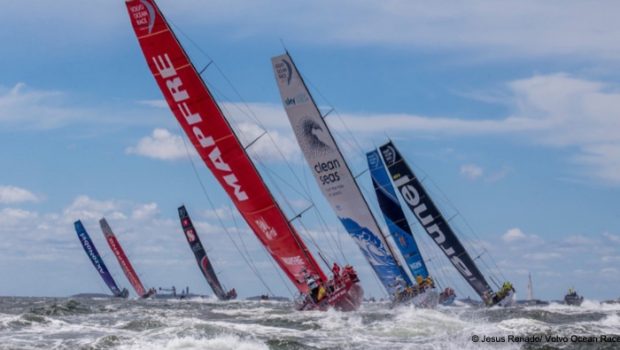


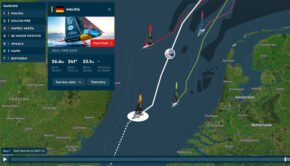
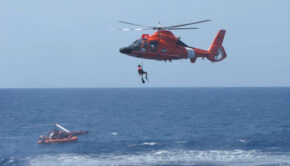
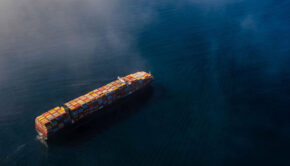
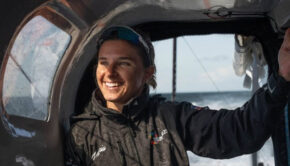
 We’ll keep your information safe.
We’ll keep your information safe.